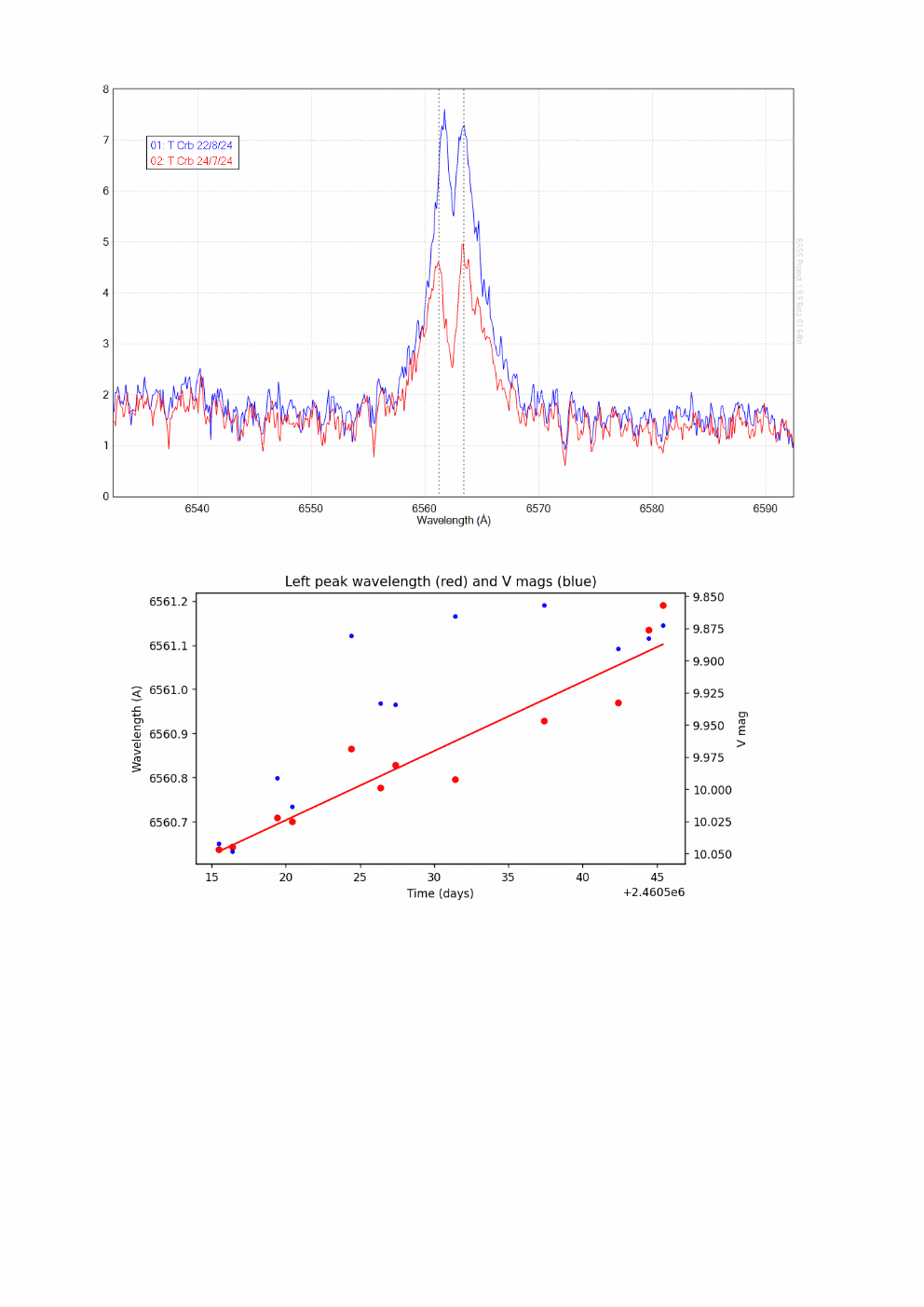Spectroscopically, the imminent outburst of T Crb is probably best suited to low resolution (wide wavelength coverage)
observation. However, not wanting to miss out, I decided to use the equipment I had here in France - a Lhires
spectrograph fitted to a C11. This is a demanding target for this rig at around V mag 10, but initial observations showed there was activity
around H alpha which was just detectable. I persevered with this and have now obtained several observations over the period 23rd July to
22nd August.
The upper plot shows two examples with the spectra having been rectified, and normalised over the region [6590, 6610]. They
illustrate trends observable over the entire series (red plot is 24th July and blue plot 22nd August). First, qthe amplitude of the Ha
activity increases with time. Second, there is a change in the relative amplitude of the two emission peaks. Third, the left peak has
shifted to a larger wavelength. Fourth, there is no such wavelength shift for the right peak. These last features are highlighted by the
two dashed reference lines passing through the peaks for the plot of 24th July.
The trend for increasing left-peak wavelength is quantified in the bottom plot which shows the peak wavelengths against time (red symbols) together
with a linear fit having regression coefficient 0.95. The average V-band magnitudes are shown for comparison as the blue symbols (taken from AAVSO
database and using the mean of +-0.05 days either side of my observations).
While, the spectral profiles I saw near H alpha are consistent with those in the literature [1], I am hoping for something more
spectacular when the eruption finally takes place!
[1] R. Zamanov, N. Tomov, and P. Marzianiet al., , 'H alpha variability of the recurrent nova T Coronae Borealis', A&A, vol. 415, no. 2,
pp. 609–616, Feb. 2004.


